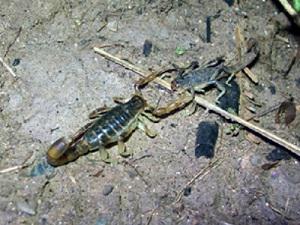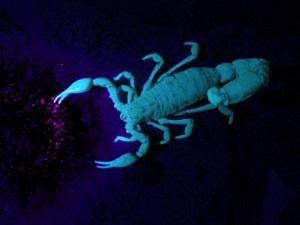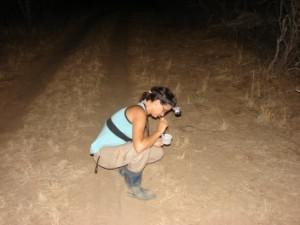Mónica Fernanda Nime
The aim of the project is to evaluate the effect of environmental factors and different types of anthropic disturbances on the diversity of scorpions and involve the local community in conservation activities throughout the region.

The gradual degradation of the Chaco ecosystem, due mainly to logging, extensive cattle farming as well as the expansion of agriculture, have transformed this region in a priority for conservation. At least 80% of the original "Chaco" forest area in the province of Cordoba, Argentina, has been lost. Chancaní Natural Reserve includes one of the last relicts of original forest that has been relatively lightly disturbed in Córdoba province, making it an area of great importance from a conservational point of view. This area includes representative samples of plant communities predominant of the Chaco Serrano and Chaco Occidental districts. In addition, the reserve has the largest number of sympatric scorpions’ species (9 species represented by two families: Buthidae and Bothriuridae) so far recorded in a town in Argentina. The lack of control of anthropic activities (fire, cattle farming and agriculture) has direct and indirect effects on plant and animal communities. This study focuses on evaluating the effects of these activities on the scorpion community.

We will collect data in 4 stations (mature forest, burned forest, cattle established forest and agriculture zone, this final outside of the reserve Chancaní) with 15 fixed transects for 12 nights between November to February. Transects will be walked with UV light torches in order to visualize the scorpions. In each transect we will record scorpion abundance, light intensity, atmospheric pressure, temperature, humidity, wind speed, soil hardness and plant coverage. Five pitfall traps with over-saturated saline solution will be deposited in each intertransect. Every individual caught will be identified according to species, sex and developmental stage. The relationship between environmental variables and species richness and diversity, as well as the superficial activity of scorpions will be analysed at local scale. For each sector and each month, we will estimate the Shannon-Wiener diversity index. Also, the biological dissimilarity between communities will be measured.

This study expects to analyse how and when human activities affect scorpion communities, evaluating the possibility of using scorpion communities as bioindicators of the level of disturbance on a local scale in the arid Chaco. This study also pretends to observe how different environmental factors influence the scorpion community. This work will be exposed to the local community by organizing talks in schools and workshops about conservation of the Chaco aimed at professors, teachers and the community in general.